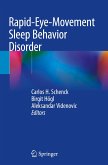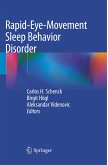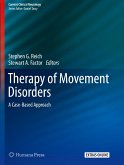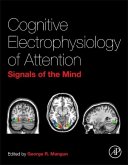Sleep, Movement Disorders, and Dopamine will be divided into five parts, each detailing a unique theme: (I) physiology of the dopaminergic system; (II) role of DA in PLMD and RLS; (III) DA hypofunction as a contributor to RBD; (IV) imaging studies in DA deficient states; and finally (V) the downside of DA treatment underlying the fine balance between sleep and wakefulness. Each part will be divided into several chapters further exploring and reviewing recent data as detailed in the table of contents. The neurotransmitter, dopamine (DA), plays a fundamental role in wakefulness and arousal. Although many questions still remain about its role in mediating these two critical processes, recent electrophysiological, and neuropharmacological, imaging and genetic studies have revealed new fascinating and detailed information. One of the most important, but yet controversial areas in neuroscience today revolves around dopamine administration in dopamine deficient states. For example, dopamine administration in Parkinson s disease (PD) provides a critical medium by which many of its sleep-related effects have been studied and argued. Preliminary findings tend to indicate that the administration of a DA D3-preferring agonist induces somnolence and sleep in laboratory animals and man. Activation of postsynaptic DA D1 or D2 receptors increases wakefulness but selective stimulation of DA D2 autoreceptors or blockade of DA D1 or D2 receptors induces the opposite effects, while activation of the DA D3 receptor induces severe hypersomnia and sudden irresistible sleep attacks.
Sleep-related movement disorders such as restless legs syndrome (RLS) and periodic limb movement disorder (PLMD) are closely related movement disorders, which can disturb sleep onset and sleep maintenance. Although the mechanisms that underlie idiopathic RLS or PLMD are not fully understood, there is currently substantial evidence that dopaminergic dysfunction is likely involved: First, the symptoms of RLS and PLMD are responsive to treatment with dopaminergic agents; secondly, neuroimaging studies using positron emission tomography (PET) suggests dopaminergic hypofunction; and finally, decreased dopamine D2 receptor binding and 6-[18F]fluoro-L-dopa (FDOPA) uptake was shown in the putamen and caudate nuclei in patients with RLS. In contrast, marked striatal dopamine depletion was demonstrated in patients with REM sleep behavior disorder (RBD) as the base for the clinical and nosological overlap of RBD with PD. PET and SPECT also suggested that sleep abnormalities in PD, such as REM sleep diminution or increased PLMD, are indirect manifestations of the primary striatal dopamine deficiency. This fascinating and complex relationship is one example which underlies why discussion of the dopaminergic system is crucial in patients with motor and sleep disturbances.
Sleep, Movement Disorders, and Dopamine will be divided into five parts, each detailing a unique theme: (I) physiology of the dopaminergic system; (II) role of DA in PLMD and RLS; (III) DA hypofunction as a contributor to RBD; (IV) imaging studies in DA deficient states; and finally (V) the downside of DA treatment underlying the fine balance between sleep and wakefulness. Each part will be divided into several chapters further exploring and reviewing recent data as detailed in the table of contents.
Sleep-related movement disorders such as restless legs syndrome (RLS) and periodic limb movement disorder (PLMD) are closely related movement disorders, which can disturb sleep onset and sleep maintenance. Although the mechanisms that underlie idiopathic RLS or PLMD are not fully understood, there is currently substantial evidence that dopaminergic dysfunction is likely involved: First, the symptoms of RLS and PLMD are responsive to treatment with dopaminergic agents; secondly, neuroimaging studies using positron emission tomography (PET) suggests dopaminergic hypofunction; and finally, decreased dopamine D2 receptor binding and 6-[18F]fluoro-L-dopa (FDOPA) uptake was shown in the putamen and caudate nuclei in patients with RLS. In contrast, marked striatal dopamine depletion was demonstrated in patients with REM sleep behavior disorder (RBD) as the base for the clinical and nosological overlap of RBD with PD. PET and SPECT also suggested that sleep abnormalities in PD, such as REM sleep diminution or increased PLMD, are indirect manifestations of the primary striatal dopamine deficiency. This fascinating and complex relationship is one example which underlies why discussion of the dopaminergic system is crucial in patients with motor and sleep disturbances.
Sleep, Movement Disorders, and Dopamine will be divided into five parts, each detailing a unique theme: (I) physiology of the dopaminergic system; (II) role of DA in PLMD and RLS; (III) DA hypofunction as a contributor to RBD; (IV) imaging studies in DA deficient states; and finally (V) the downside of DA treatment underlying the fine balance between sleep and wakefulness. Each part will be divided into several chapters further exploring and reviewing recent data as detailed in the table of contents.







